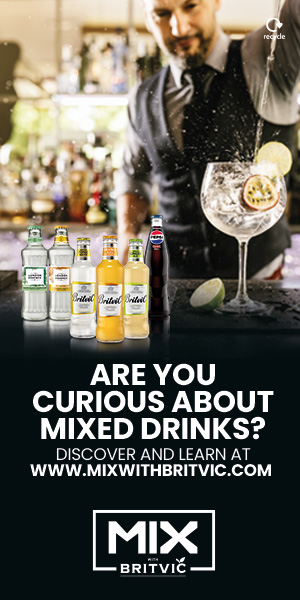 Last year SLTN’s Must-Stocks feature posed the question, ‘will (2024) be the year of stout?’
Last year SLTN’s Must-Stocks feature posed the question, ‘will (2024) be the year of stout?’
The answer is yes. Yes it was.
In the most recent figures sent to us by on-trade specialist CGA, stout sales had grown from £74 million in 2023 to over £102m in 2024.
This came after everyone from BrewDog to Belhaven predicted a boom in stout sales, and several new stouts entered the market.

But rather than stealing Guinness’s lunch, these new entrants seem to have helped grow the category overall.
In fact, Guinness itself seems to have done particularly well out of this stout renaissance, leapfrogging Diageo stablemate Captain Morgan to become the third biggest drinks brand in Scottish hospitality.

When CGA sent us the top four stout brands in Scotland earlier in the year, Guinness was actually listed twice – once for the regular draught product and then again for its ‘micro-draught’ format, which sells so much CGA has listed it separately.
That’s created the odd situation where Guinness is both the first and third-biggest stout in the Scottish on-trade.
But stout was far from the only beer-related success story in this year’s CGA numbers.

Lager sales grew from £684m to £721m, with Tennent’s Lager, Birra Moretti, Peroni Nastro Azzurro, Madrí Excepcional and Stella Artois the five biggest-selling brands.
And while the ale category has been slowly shrinking for the past several years, this year it actually increased in value, up from £124m to £131m.
Belhaven Best remains the country’s most popular pint of ale, followed by Beavertown’s Neck Oil IPA, Caledonia Best, Deuchars IPA and then John Smith’s.

While the biggest brands obviously account for a huge chunk of beer sales every year, they aren’t the only players in town, and operators told SLTN earlier this year that they have seen the market shift considerably over the past couple of decades, from easy-drinking, mainstream beers to more exotic Continental names through to challenging craft beers.
Graham Suttle, the operator behind Glasgow venues including Lebowskis, Porter & Rye and The Finnieston, said he reckoned the Scottish beer sector had settled into a ‘new normal’.

“Ultimately we’ve arrived back at the same point – people want an easy drinking beer that’s nice, cold and refreshing and one that doesn’t have to challenge their tastebuds or their mental capacity for memorising one million different hops or ingredients,” he said.
“You could say the beer market has begun the process of resetting itself. This reset, however, starts at a higher minimum bar than before.
“There is a large proportion of consumers not willing to go fully back to basics as they expect more.
“Scottish brands who had been craft supporters and early adopters are looking to mass market appeal again.
“The likes of Innis & Gunn are a hop, skip and a jump above the pack in terms of quality and flavour, and that’s where they want to stay.
“I think they will – I think they will be Scotland’s answer to the Continental style which people are more than happy to trade up to for very little extra.”

Elsewhere, drinks companies pointed to food pairing as one of the big growth opportunities for beer in the on-trade.
Crawford Sinclair of Innis & Gunn said recommending a particular beer to match with specific dishes ‘is a great way to trade consumers up and keep them engaged’, while Fiona Matheson at Belhaven said the brewery team has ‘worked with several talented chefs over the years to understand how and what foods our beers pair with perfectly’.



















